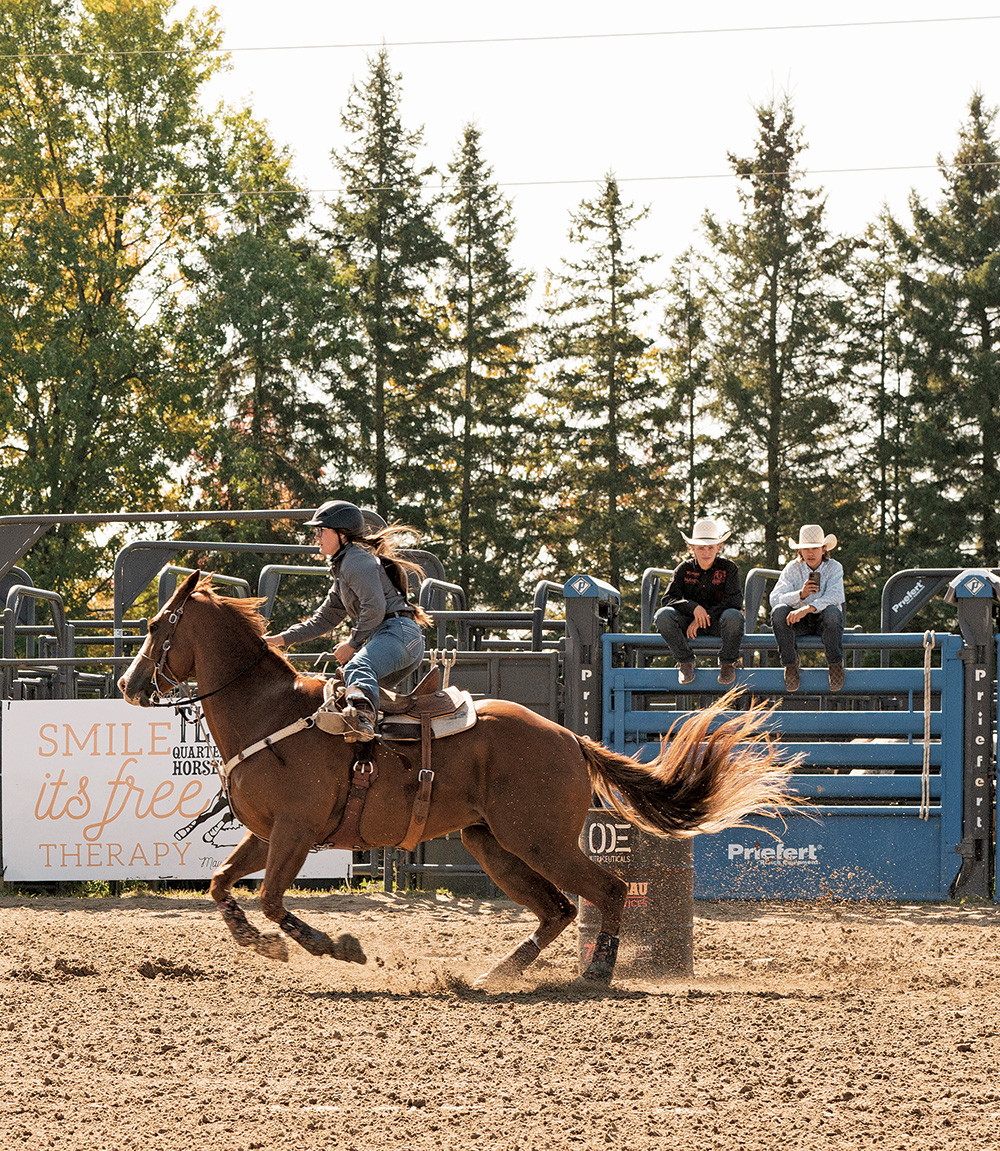Be it Western or English, rodeo or dressage, these easy riders know one thing—Southern Georgian Bay is horse country.
by Dianne Rinehart // Photography by Anya Shor
If you haven’t noticed, Southern Georgian Bay is horse country.
The region is dotted with dozens and dozens of horse barns specializing in English or Western-style riding lessons (the difference starts with how you hold the reins and the style of saddle).
Many, too, offer coaching for competition riding, and host camps and clinics for beginners from kids to senior citizens.
Some, such as Mountain View Stables in The Blue Mountains, offer trail riding experiences by the hour.
And though development has impinged on the standardbred race tracks that used to dot the local countryside, there are still so many ways to experience the excitement of watching experts compete at dressage, hunter/jumper and rodeo competitions in the area.
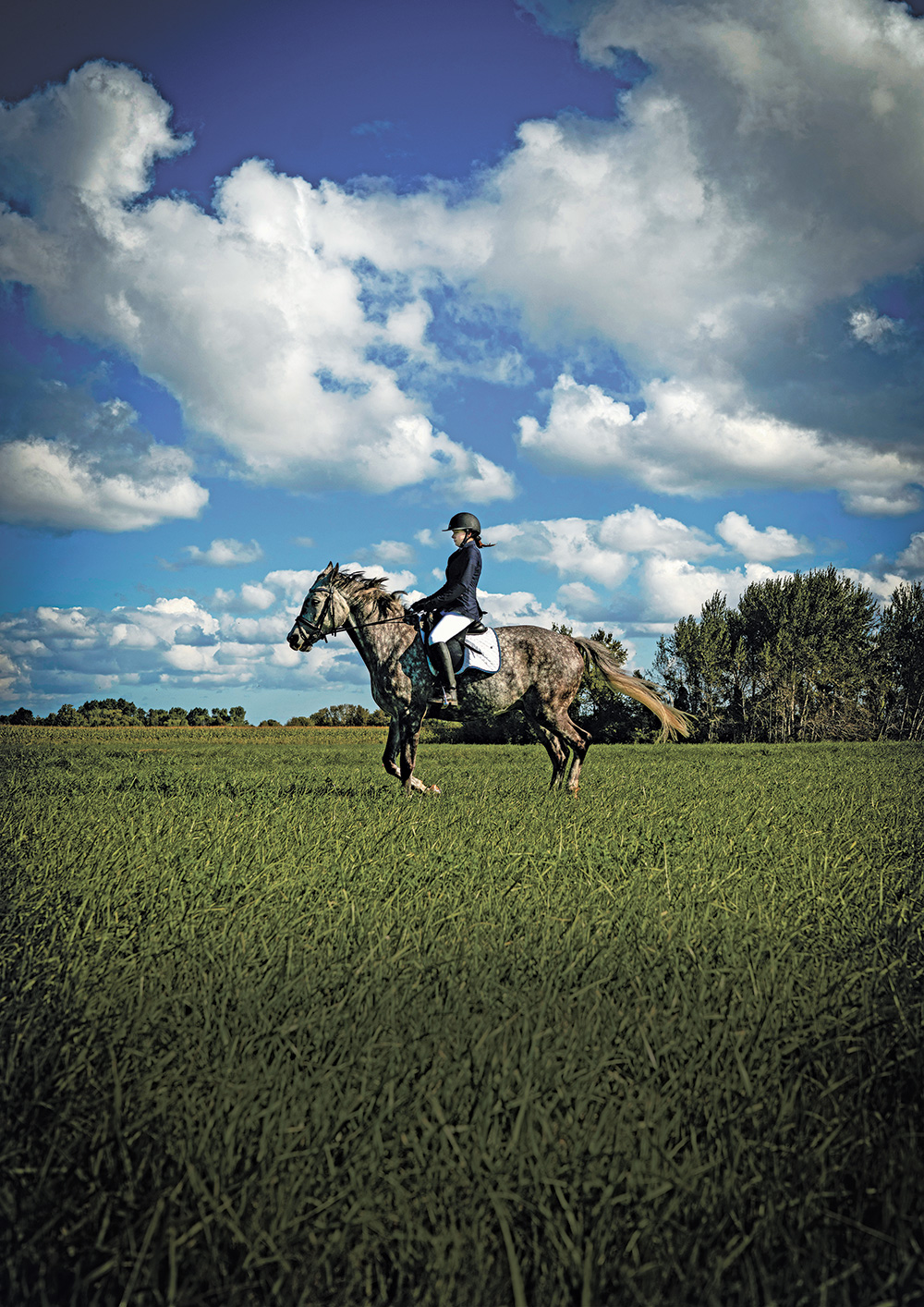

Overwhelmed with where to start? First, draw some inspiration from the five local riders profiled in the following pages, who represent some of the distinct varieties of the area’s riding culture.
Then, try attending equestrian dressage and jumping competitions or rodeo competitions in the area listed on the Equestrian Canada and Canadian Pro Rodeo Association websites.
Or just search out a local lesson barn and ask if you can watch from outside the paddock until your connection to horses grows and spurs you to act.
Whether you are hiring a horse for an hour-long trail ride, or mucking out a stall so you can afford to ride, or you own your own horse, doesn’t matter.
What matters is the connection to your steed—and through it, to the gorgeous fields, forests and vistas of Southern Georgian Bay.
So, if the English-style riders in Polo Ralph Lauren fashion commercials or the Western cowboys in the hit series Yellowstone have left you itching to ride, read on. Then hoof it to one of the nearby barns and saddle up!
Candice Rainey,
owner of Signature Equestrian
Nottawa
Candice Rainey is all about horses all the time. She grew up with them, started riding at age eight, and has competed in the hunter/jumper disciplines for 17 of the 20 years she’s been riding.
In 2014 she established Signature Equestrian in Nottawa, where she breeds sport horses for the hunter/jumper rings, coaches, and runs an English riding teaching centre for kids from seven to, practically, 70.
“Breeding and training are my favourite parts of the business. Nothing is more rewarding than breeding, training and competing your home-bred horses,” says Rainey, who owns 50 horses and has three stallions currently at stud. She also rides competitively with her jumper, Simply Merlin, and her stallion, Scion of Aries.
“Being on horseback is my happy place and always brings me joy,” she says, though she adds, “Breeding isn’t for the faint of heart. As much joy as it brings, it does come with some heartbreak as you can’t control all outcomes.”
Rainey doesn’t teach kids younger than seven because they don’t yet have the attention span or the physical strength, she says. But is it ever too late to start? “Never!” She has students who have started from scratch that are in their sixties, she says. “It’s their ‘me time.’ It gets them out of the house and into a relaxed atmosphere.”
Kids can take lessons or attend week-long summer camps where they not only learn the basics of riding, but how “to interact with foals and learn how they grow.”
No matter what your age, there’s no need to be intimidated or shy about learning how to ride.
“We start with how to lead a horse and groom them and be safe around them on the ground,” she says. “Then you learn how to tack them up with a saddle and bridle. Next, it’s how to safely mount them and the basics of control in a walk. Once (students) have confidence and control of their own body, then we teach faster gaits.”
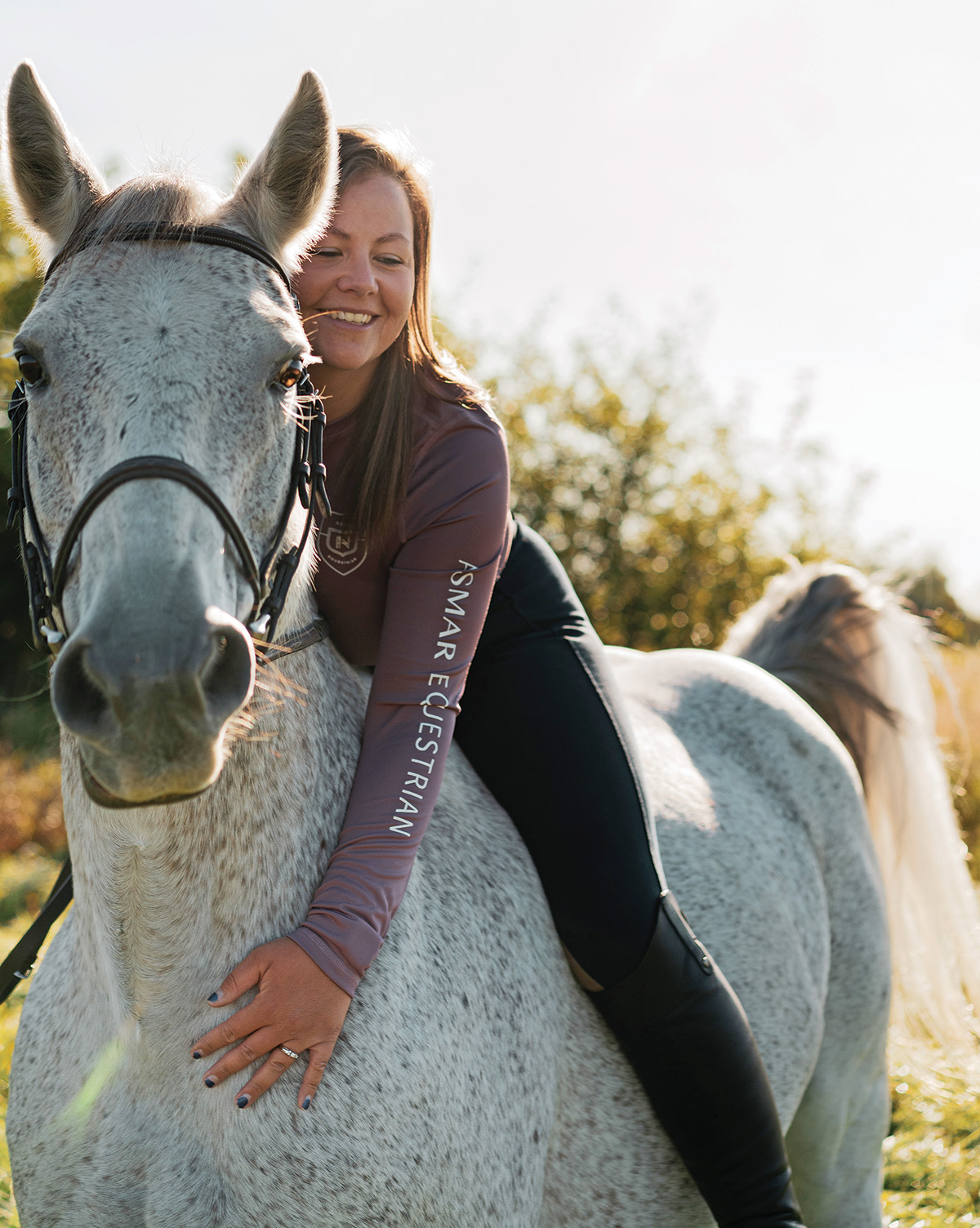
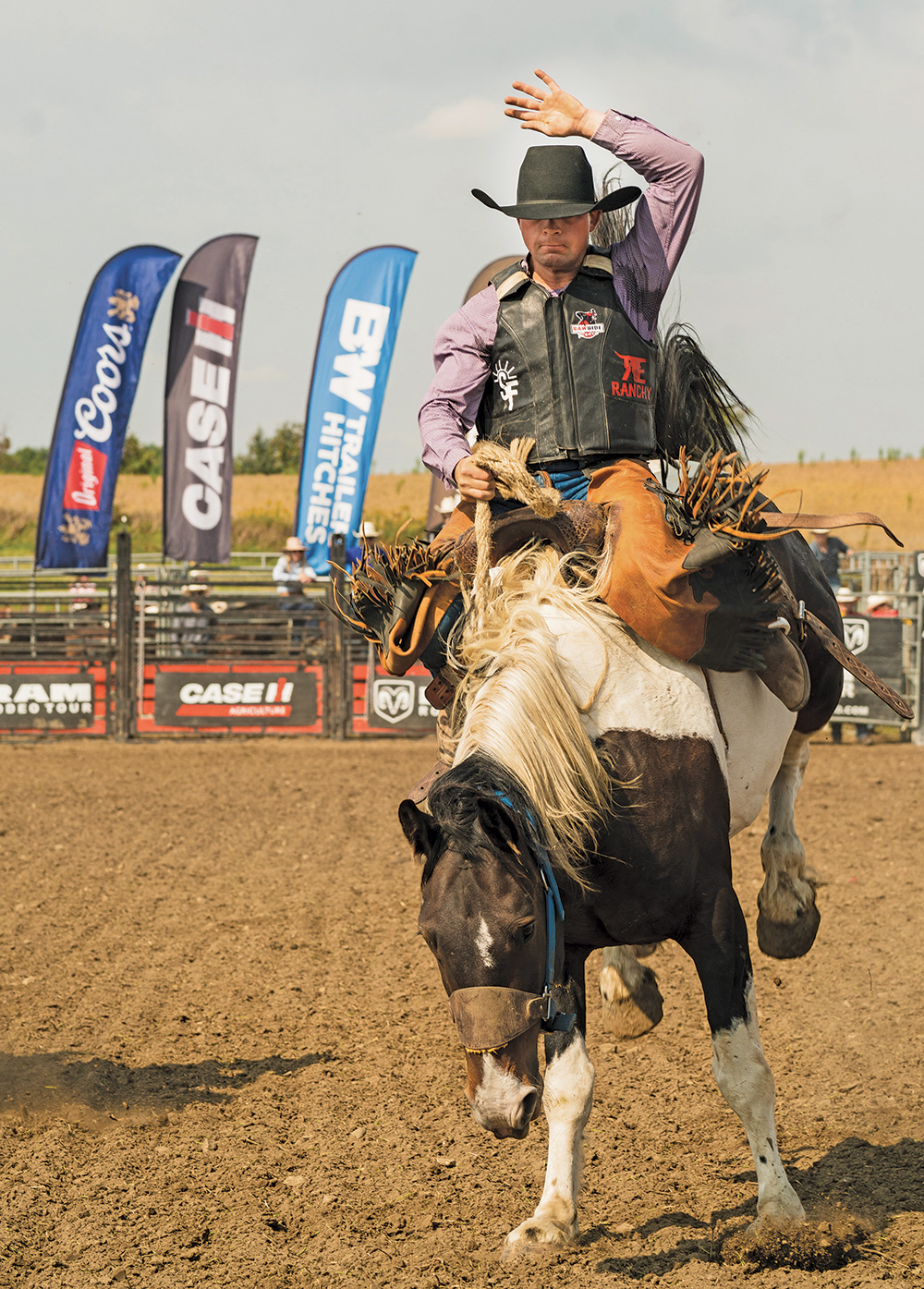
Gideon Stuzman,
bronc rider
Owen Sound
Imagine this: You’re on a horse who has been specifically bred to buck you off its back, a sport based on the skills of the original cowboys.
Worse, you have to last eight seconds without touching the horse with your free hand while you’re holding nothing but the reins in your other.
Is that dangerous?
“Oh yeah,” bronc rider Gideon Stuzman, 24, says softly. “But knock on wood, I haven’t had any serious injuries. Worst I’ve had is a broken toe.”
You’d think with a sport like this, you’d get a chance to practise before the chute gate opens and you burst into the ring on a flying horse. But not so with bronc riding. “It’s a new horse every time. Most of the time you get on a horse you’ve never heard of,” says Stuzman, who owns a small business building garden sheds when he’s not riding a bucking horse.
Indeed, though Stuzman has ridden horses since he was 10, he had never been on a bucking horse until his first competition in a rodeo.
“Ever since I was a kid, I wanted to try it,” he says. “When I was 18, I went to the rodeos and hung out, and one day I did.”
How did he do? Second place in a scoring system that marks both the rider’s skills at staying on and the horse’s in bucking the cowboy—or cowgirl—off. Now, Stuzman’s leading the standings for bronc riding in the RAM Rodeo Tour and he’s in the top five of the International Professional Rodeo Association, which includes riders from the U.S. and Canada.
Like other types of riders, Stuzman talks about his connection to the horse.
“Basically, if they open the chute gate and you can hear what your friends are saying in the back of the chute, you’re not in the right headspace,” he says. “Once I’m in the chute, I don’t hear the announcer or the music or anything. Everything is moving a lot slower in my mind than in real life.”
He says doesn’t hear the crowds or the music again until he is off the bronc; until then, the world narrows to just him and the horse. “It’s a crazy feeling.”
So, what’s next? Stuzman has his eyes set on getting his international professional card to enter the finals in Oklahoma City in 2024.
Julie Wright,
acting manager,
Greenhawk Equestrian Sport
Nottawa
Julie Wright never had to think about whether she wanted to learn to ride horses or not, never mind whether she would learn to ride Western or English styles. “My aunt sat me on a horse at age two,” she says. “She was a real horsewoman in England.”
She has been riding ever since, most recently on her horse Cupid, who was born on Valentine’s Day, integrating her love of horses with her other childhood passion, ballet dancing, says the rider who specializes in dressage.
In dressage events, the horse must perform a prescribed pattern of movements at a walk, trot and canter. It is one of the most artistic of the equestrian sports, according to the Federation of Equestre Internationale, which oversees the Olympic disciplines of jumping, dressage and eventing.
“Ballet and dressage and the horse go together,” says Wright, who has travelled to Europe to ride. “It gymnastically develops the horse and gives them muscle mass to perform the movements that you’re asking of the horse mentally, emotionally and physically.”
Wright’s connection with horses seems almost mystical and it is very attuned to honouring them and their needs.
“We have an amazing connection which transcends all explanation,” she says of Cupid.
And “they read your energy,” she says of horses in general. “The horse has your number. You must stand naked and honest before the horse, and bring your energy level down to neutral.”the horse to pick up on those feelings, she says. “If you’re uptight, they feel it. They have to know you are going to keep them safe.”
It helps, she says, to remember that horses are a prey animal—it’s natural for them to want to flee—and humans are predators. When a cougar, for example, is attacking a horse, it jumps on the horse’s back, she explains. It’s understandable, then, that a horse would be afraid if someone is trying to ride it.
So, people must approach horses carefully and with good intent to earn their trust before they ride—one of the reasons some companies use horseback riding to build executive leadership skills. “Ask little and reward the try, reward a lot,” Wright advises. “Be humble even though you are taking the lead.”

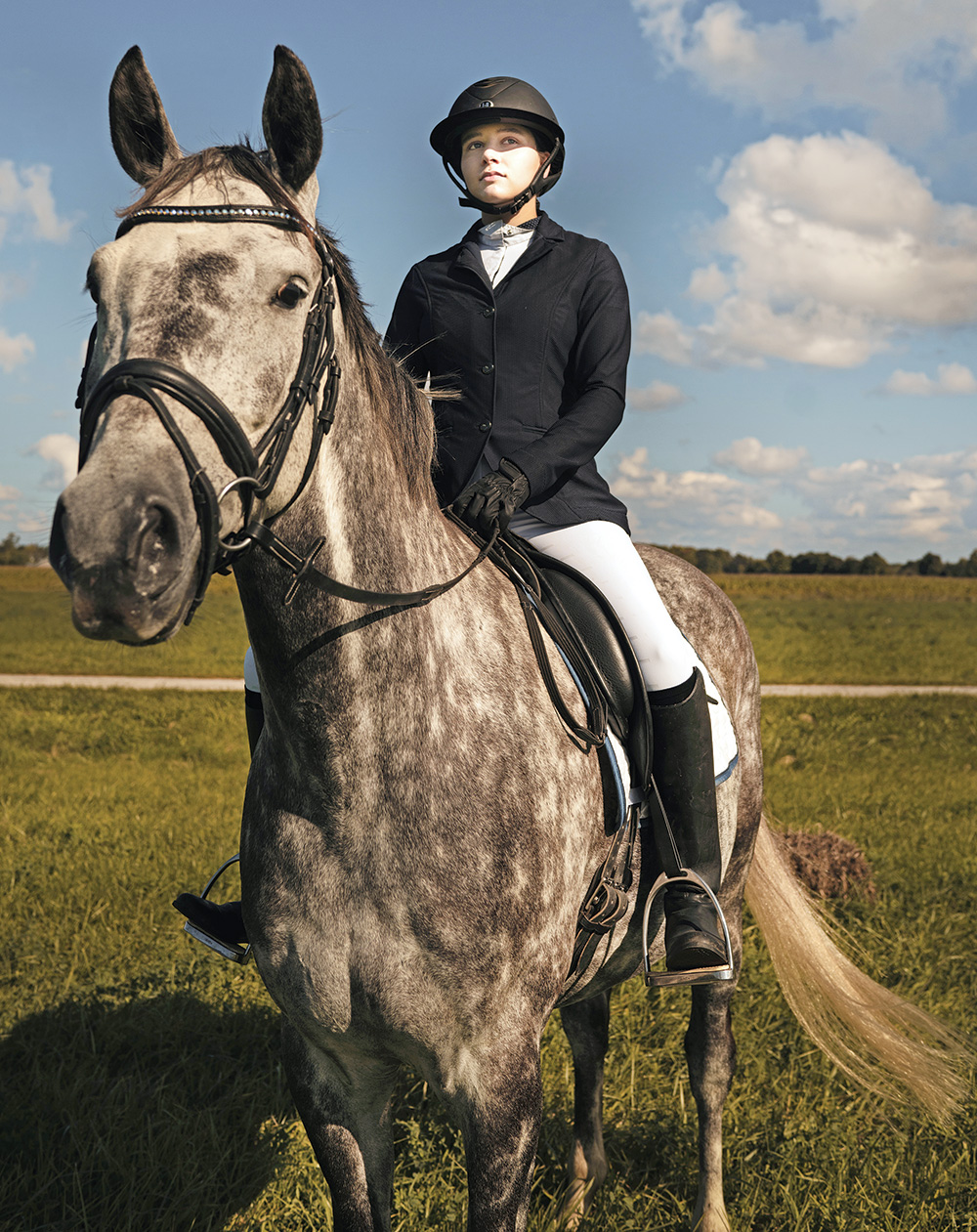
Raiwyn Cass,
apprentice farrier,
dressage rider
Collingwood
Raiwyn Cass always knew one thing: she wanted to be around horses as much as possible. The question wasn’t would she do something with horses. It was what she would do with horses.
“My family are fourth-generation horse people,” Cass says. “I learned to ride before I could walk.” Her grandparents on both sides were involved with horses. One of her grandmothers owned barns in the area and bred horses. And she has grandparents who raced standardbreds.
“My grandfather finally retired last year,” she says. “But then he got his hip replaced and he wants to race again. He is devoted to horses.” And she has an aunt who rides competitively.
Though she rides dressage on her horse, Atlas, Cass says she isn’t driven to compete. Her goal? “I want to learn as much about horses and be the best horsewoman I can be.”
That’s a journey that took her out west to Olds, Alberta, for a one-year farrier science program at the Olds College of Agriculture & Technology. There, she learned how to prepare or treat a horse’s foot before it is shoed, a trade that is believed to have begun in the Roman Empire.
“I’m around horses all day,” she says of the job. Right now, and for the next four years, Cass plans to apprentice with other farriers before launching her own business, Well Done Farrier. She also works as a salesperson at The Tack Shoppe in Nottawa.
“We’re lucky to have so many wonderful farriers in the area,” she says, of a hard job she describes as “physically demanding and dangerous.”
And despite the loss of local showgrounds and racetracks, Cass says she has noticed an uptick in interest in both the equine hunter/jumper sports and Western riding.
“There are 10 to 15 lesson barns within a half hour’s drive,” she says, specializing in everything from the English sports to rodeo. If you’ve always yearned to be a cowboy, there are even “build a cowboy” courses to be had. And if you need a rodeo horse, there’s Chuck Ornstein’s Stone Haven Quarter Horses.
All that foretells a bright future for a farrier in this region that is so rich with families like hers, steeped in horse traditions.
Emilee Langford,
rodeo rider
Petrolia
At 17, Emilee Langford is on the rodeo circuit riding her two horses, Derby (professional name: Eye Bee a Canadian) and Goose (Dr. Said No Sweets), at breakneck speeds.
Both horses can do Langford’s two favourite rodeo sports—pole bending and barrel racing. Derby, however, specializes in the pole event, which looks like slalom skiing on a horse, while Goose specializes in barrel events, in which the horse and rider try to run a cloverleaf pattern around pre-set barrels in the fastest time.
“I like the thrill of barrels and poles more than anything because it’s so fast,” says Langford, who rode in the Canadian High School Finals Rodeo in Brandon, Manitoba, last August.
Langford had been around horses on her parents’ cash-crop farm since she was about three, but it wasn’t until a neighbour down the road let her warm up his horse for some international finals when she was 12 that she “kind of got hooked.”
Now, she says, “My horses are my best friends. They help me through a lot. Just being with them puts my mind at ease. I don’t know what I’d do if they weren’t here.”
Happily, she is with them a lot. She competes in rodeos every weekend from May until October across Ontario, including in Feversham near Collingwood. And she does it in style, travelling with her parents in a GMC truck that pulls a four-horse trailer with living quarters, including a kitchen, bathroom, shower and fridge.
She also travels to rodeos and trains a lot with a girlfriend. “Once we get to the rodeos there are lots of people who are friends there. There’s a family bond,” she says.
And then there are her beloved horses. “When I get on my horse, I try to have a clear mind until it’s just a few people who are going to go before me, then I start to focus. It’s a quiet place where it’s just my horse and me,” she says.
“It’s quite the feeling of 1,300 pounds of muscle dancing below you when you’re about to run down an alley,” she says of Derby and Goose. “They love their jobs.”
